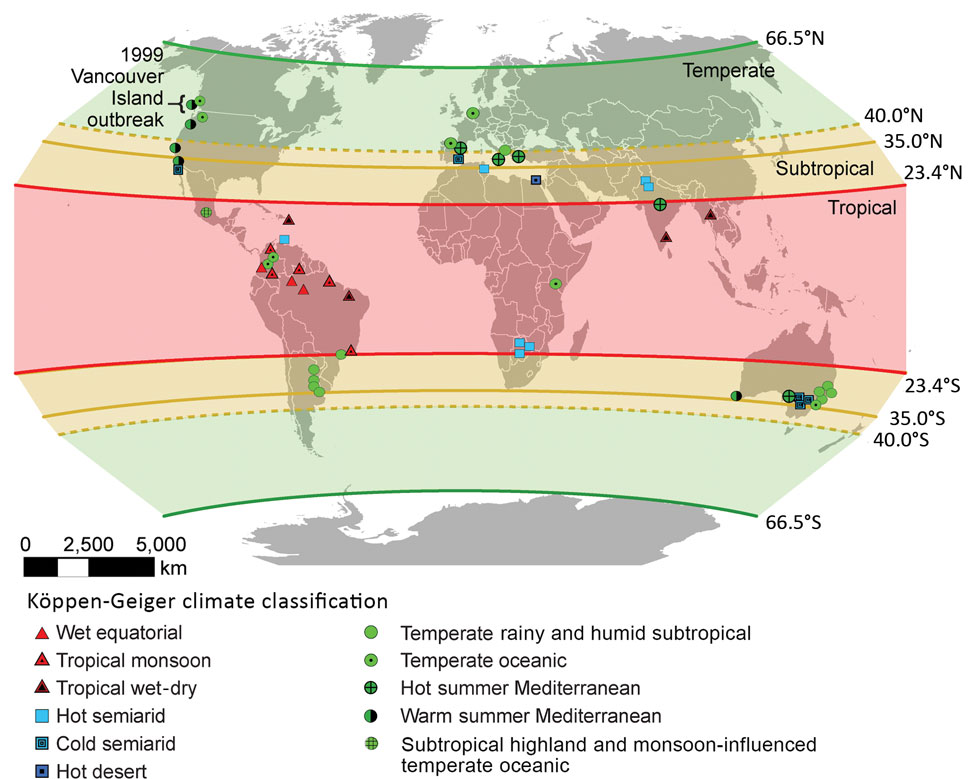Volume 25, Number 9—September 2019
Dispatch
Climate Classification System–Based Determination of Temperate Climate Detection of Cryptococcus gattii sensu lato
Figure 1

Figure 1. Global environmental isolations of Cryptococcus gattii sensu lato, 1989–2016. We mapped 83 unique geographic coordinates of C. gattii s.l. isolations and labeled them according to their Köppen-Geiger climate classification. Overlapping symbols of the same Köppen-Geiger climate classification (where isolations were 0–200 km apart) were removed for easier visualization. The solar definition of the tropics is shown as the semitransparent red area extending from the equator to 23.4 degrees north and south of the equator, the subtropics as the yellow area extending from the tropics to either 35 (solid line) or 40 (dashed line) degrees north and south of the equator, and the temperate zone as the green area extending from the subtropics to 66.5 degrees north and south of the equator.